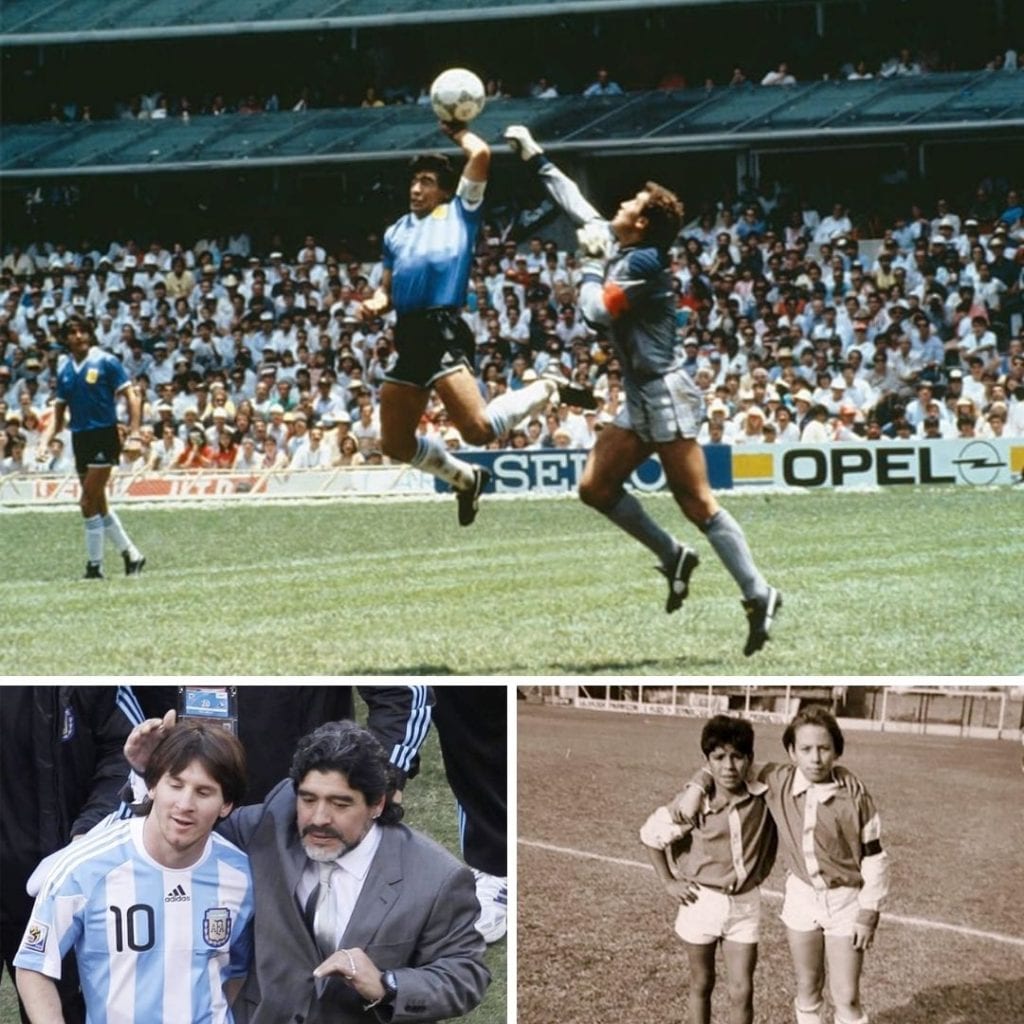
Soccer is a worldwide phenomenon. The most popular sport globally captures millions of people's imaginations, captivating both older adults in London's foggy streets and young children in Africa's impoverished nations. To put it lightly, it's one of the most globally understood and passionate forms of communication in the world. And like most great communicators, the legendary Diego Armando Maradona never had to speak a word to make the world bow at his talented feet.
Born in the Argentinian city of Lanús Partido, in the Buenos Aires Province, Maradona went on to rule the world of soccer for over two decades, making a name for himself as a World Cup winner and as one of the only two FIFA Player of the 20th Century award-winning athletes (a glory he shared with his close friend Pelé). But while Maradona's legacy was mostly built on the pitch, the Argentinian's off-the-game life is maybe even more remarkable than his soccer talent. Today, we'll look at the full and unfiltered story of one of the most polarizing figures of the last century.
A Child Prodigy
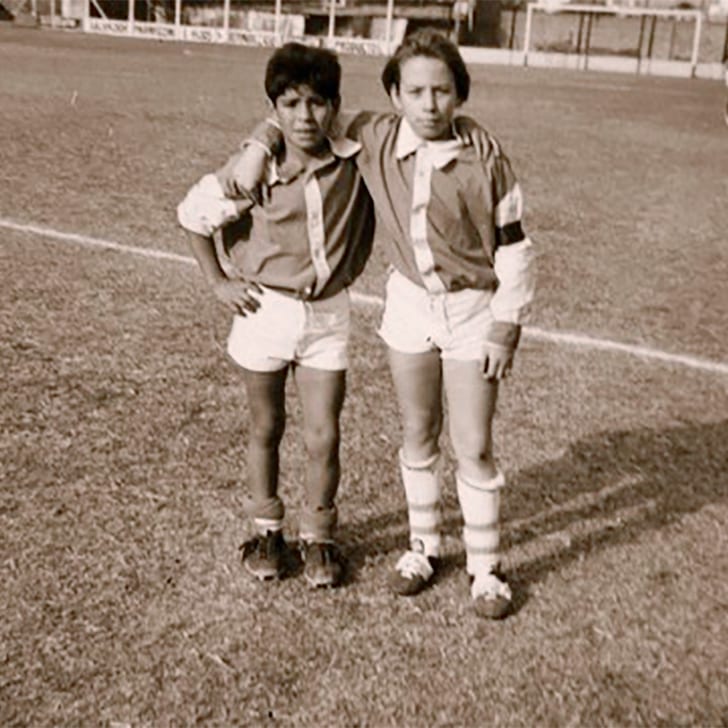
Diego Maradona grew-up in the outskirts of Buenos Aires—the oldest boy out of seven siblings. His parents were poor and lived in a shantytown, a type of Argentinian slum also known as a villa. Early on, soccer was an important part of young Maradona's life. As an eight-year-old, he impressed his coaches at Argentinos Juniors' youth team with his natural talent and incredible maturity.
Francisco Cornejo, the youth coach credited with discovering Maradona's talent, later said that "although he had the physique of a child," the young boy "played like an adult." It wasn't long before Maradona learned his trade and was called to play for Argentinos Juniors' first team.
The Debut & The Nutmeg
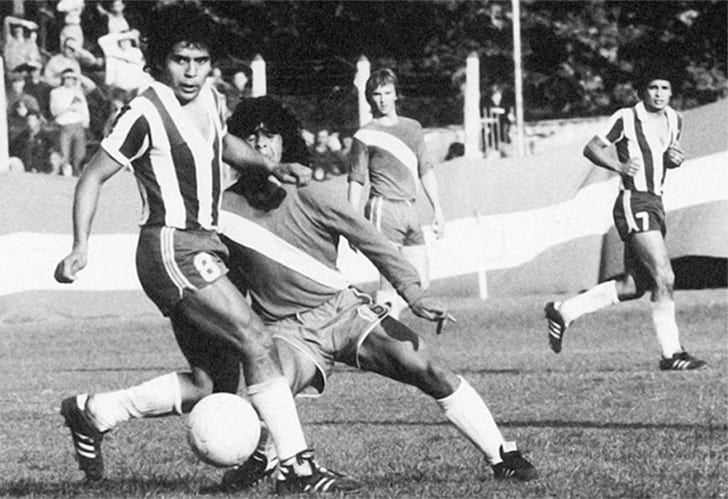
Ten days before his 16th birthday, Maradona was introduced to the Argentinian soccer fans during a game against Talleres de Córdoba. His impact was immediate. He wasn't just the youngest ever player to perform at Argentinian's soccer top tier. He was also one of the most phenomenal young talents ever spotted in that part of the world.
His very-first top-level game was marked by a now-iconic nutmeg (a soccer move), and his first senior goal came roughly two weeks later, during a match against San Lorenzo. An instant hero of the Argentinos Juniors' fans, Maradona spent five years at the club and scored a whopping 115 goals in 167 games.
Honoring Argentina's Jersey
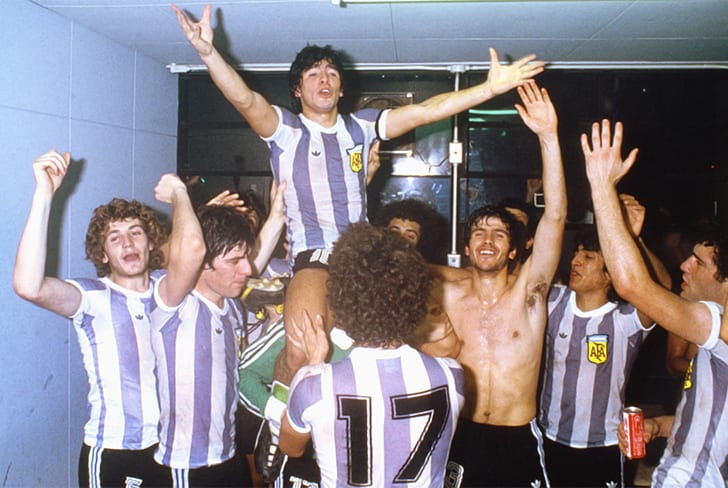
Maradona's talent was so overwhelming he didn't have to wait much to be called for the Argentinian national soccer team for the first time. He was only 16 when he debuted against Hungary in 1977. Still, his age was considered an obstacle, and Maradona was left out of the 1978 World Cup final squad.
Even though he missed out on the tournament, he got a chance to honor his country's jersey one year later, during the 1979 FIFA World Youth Championship. Playing only against under-20 players, Maradona showcased his talent with a big boy's class. His performances were key in driving Argentina's youth team to the victory. They beat the Soviet Union's youth team 3-1 to take the cup home. It was Maradona's first of many international accolades.
The King of Buenos Aires
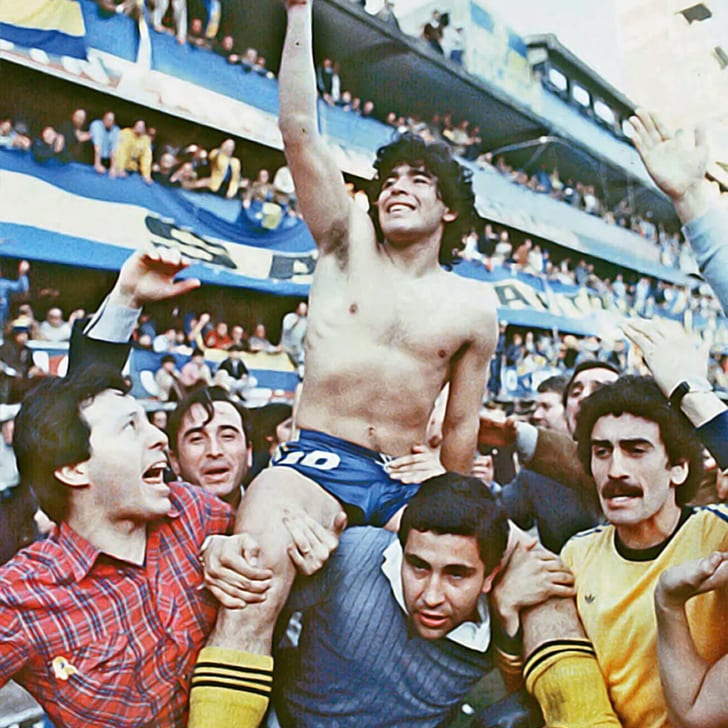
Meanwhile, Maradona was making some dreams come true with his club career. By the time he was ready to leave Argentinos Juniors, there was no shortage of offers on the young athlete's table. But Maradona only wanted to play for one club: his favorite team in the country, the legendary Boca Juniors of Buenos Aires.
Boca Juniors paid $4 million to sign the Argentinian phenomenon, and they surely got their money's worth! In just one year, Maradona led Boca Juniors to the Argentinian league title, with an impressive campaign that included a memorable 3-0 win over the rival side River Plate. Quite predictably, the Boca fans loved him and treated him like a god.
The Biggest Stage of All
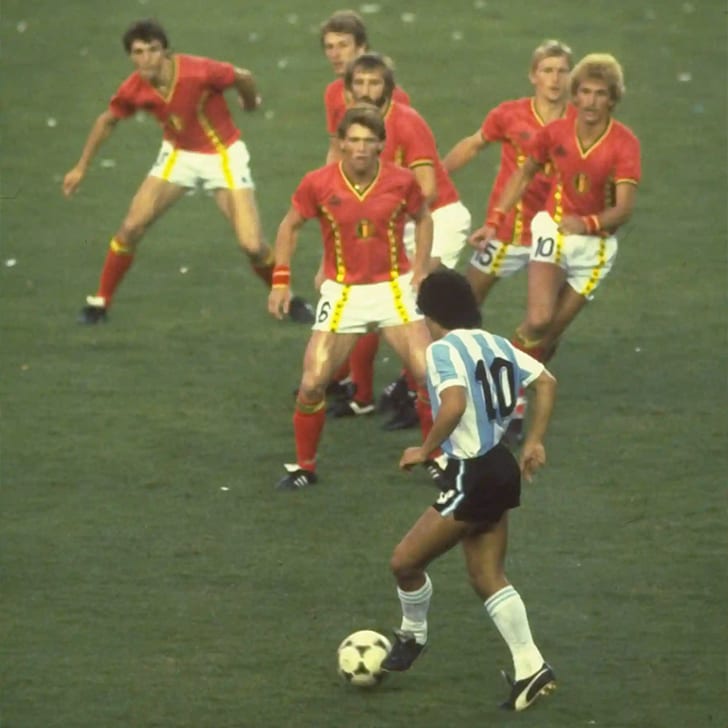
By the time the 1982 World Cup began, Maradona wasn't "the future" of Argentinian soccer anymore. A bonafide superstar, he was no longer "too young" to feature on the final squad, and he made a stirring impression on the Spain-host tournament.
He played five games and scored two goals before Argentina was dropped from the tournament after losing against Brazil. Maradona was sent off during that game, which was reportedly marked by many violent fouls. But his impact on the soccer community was so big that Maradona ended up staying in Spain. By the time the 1982 World Cup was over, he became soccer's most expensive player after being acquired for $7.2 million by F.C. Barcelona.
Glory & Despair At Catalonia
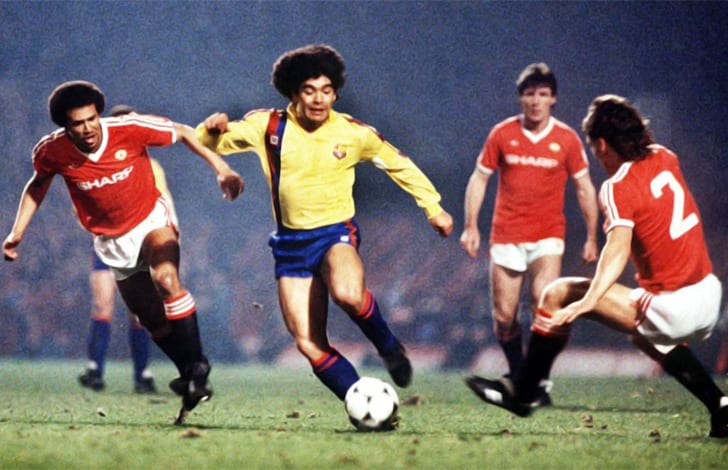
Playing for F.C. Barcelona in the '80s was as good a gig as one could get as a soccer player. But while Maradona did shine in Spain, landing a Supercup and a Copa del Rey, his spell in Catalonia was marked by several off-the-field controversies. He didn't always get along with the club executives, and many troubling injuries hurt his Spanish soccer performances.
Maradona was at the center of an on-pitch "bloodbath" in a game against Athletic Bilbao, to make it worse. After being fouled by defender Andoni Goikoetxea, a man who was not by accident known as "the butcher of Bilbao," Maradona snapped, and hell broke loose between the two teams. The shameful incident marked his departure from Spain.
South Italy's Savior
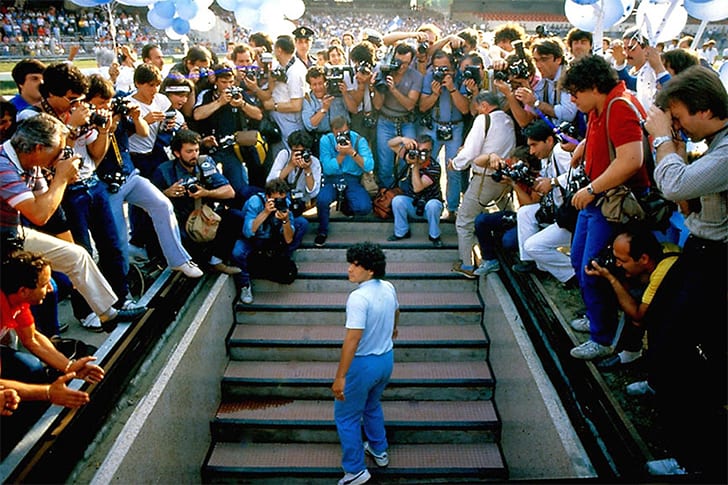
In 1984, Maradona left Barcelona for the Italian side Napoli. The south Italy team paid a then-record $10.4 million sum for his services, but Maradona made all that money look insignificant compared to his remarkable performances. At Naples, the Argentinian star was received by an excited crowd of over 70,000 people and tasked with a tough mission: to take the Italian title away from the north of the country's ever-successful teams.
He spent seven seasons at Napoli, becoming the ultimate legendary player of the club. He delivered even more than expected of him, leading Napoli to their first-ever Italian title in 1987 and doing it again in 1990. By the time he left the club, he had such a legendary status that Napoli decided to retire Maradona's number 10 jersey forever.
Maradona's Playing Style
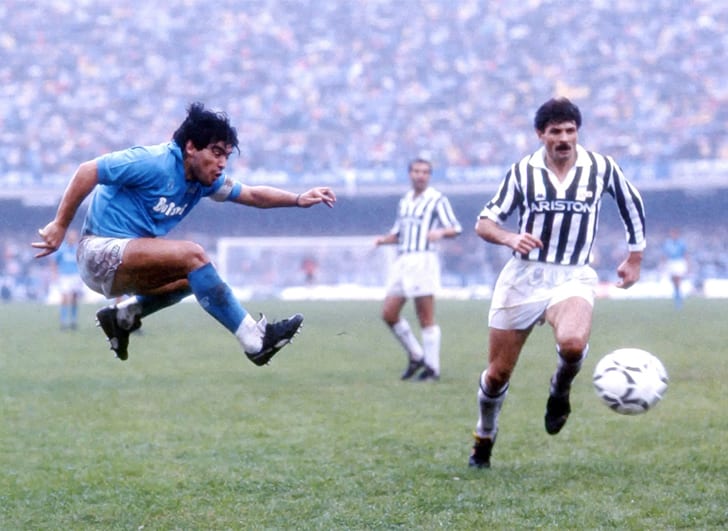
We all know Maradona was capable of scoring unbelievable individual goals. His dribbling skills were incredible, and his confidence with the ball is still pretty much unmatched. But what else can we say about the playing style of one of soccer's ultimate best?
Maradona was, by all means, a leader on the pitch, operating from the number 10 position. He usually had a free-role, which meant he could concentrate more on the attacking side of the game and less on demanding defending obligations. But Maradona's main purpose, as his former teammate Jorge Valdano has put it, was to make "the miracles happen."
That Summer of 1986
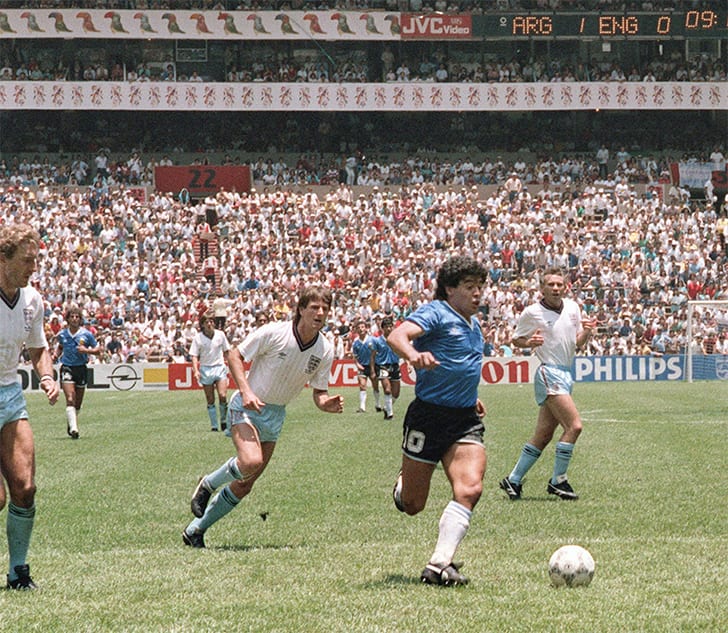
While making history at Napoli, Maradona continued to play for the Argentinian national soccer team. In 1986, he joined his fellow countrymen and traveled to Mexico, the stage of that year's World Cup edition. Maradona was the most influential tournament player by far, leading Argentina to a historic victory in the final against West Germany.
But on the path to victory, Argentina had to overcome many challenges. After eliminating Uruguay in the first knock-out round, the South American side was scheduled to play England in a quarter-final game that would become one of soccer's all-time legendary matches.
The Hand of God
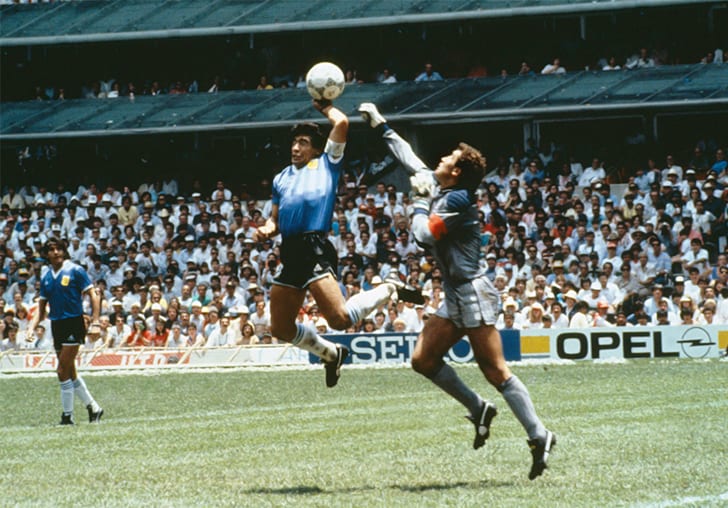
Every soccer fan knows what the words "hand of God" mean. The 1986 World Cup quarter-finals fixture between Argentina and England became the staple game of the tournament, in great part thanks to Maradona's exquisite but extremely controversial exhibition.
Losing 1-0, Argentina tied the game with a controversial Maradona goal that was supposedly scored with his hand. After the game, Maradona famously said it had all been the work of the "hand of God." But even more impressive was the goal Maradona scored minutes after that disputed hand-ball moment. He dribbled past five England players to score a magnificent individual goal that FIFA later named as the best goal in the World Cup history resulting in Argentina winning 2-0.
As High As One Can Possibly Go
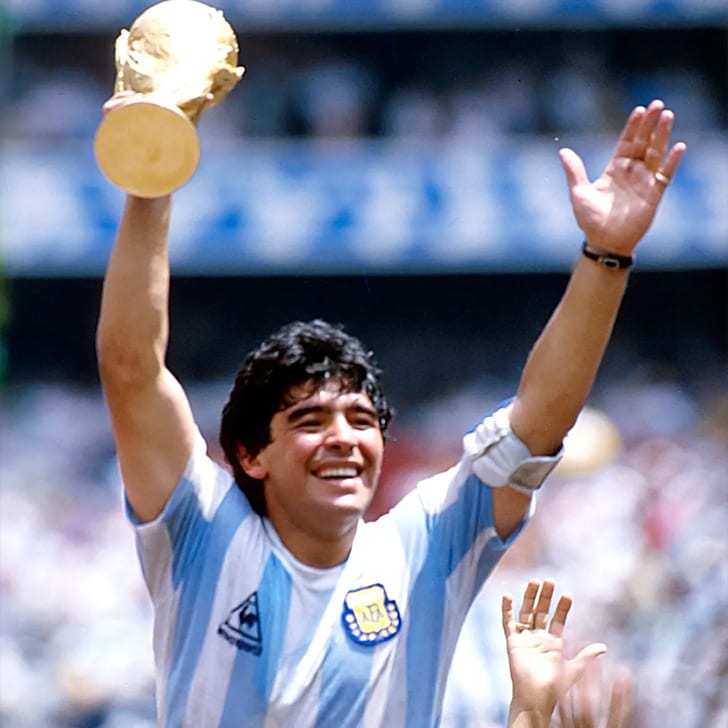
In the 1986 World Cup final, Maradona delivered yet another amazing performance, providing the vital assist to Argentina's winning goal over West Germany. The crowd of over 115,000 was ecstatic as the Argentinian star lifted the trophy. To this day, Maradona's performances in that 1986 World Cup edition are still considered to be the best in soccer history.
Providing 10 out of Argentina's 14 goals in the competition, Maradona's Summer of 1986 was crucial in establishing his reputation as one of the sports' most brilliant individual performers. Some major athletes and soccer experts even claimed Maradona "single-handedly" won the competition for Argentina, even though that may not be completely fair to his teammates.
Off-the-pitch Controversies
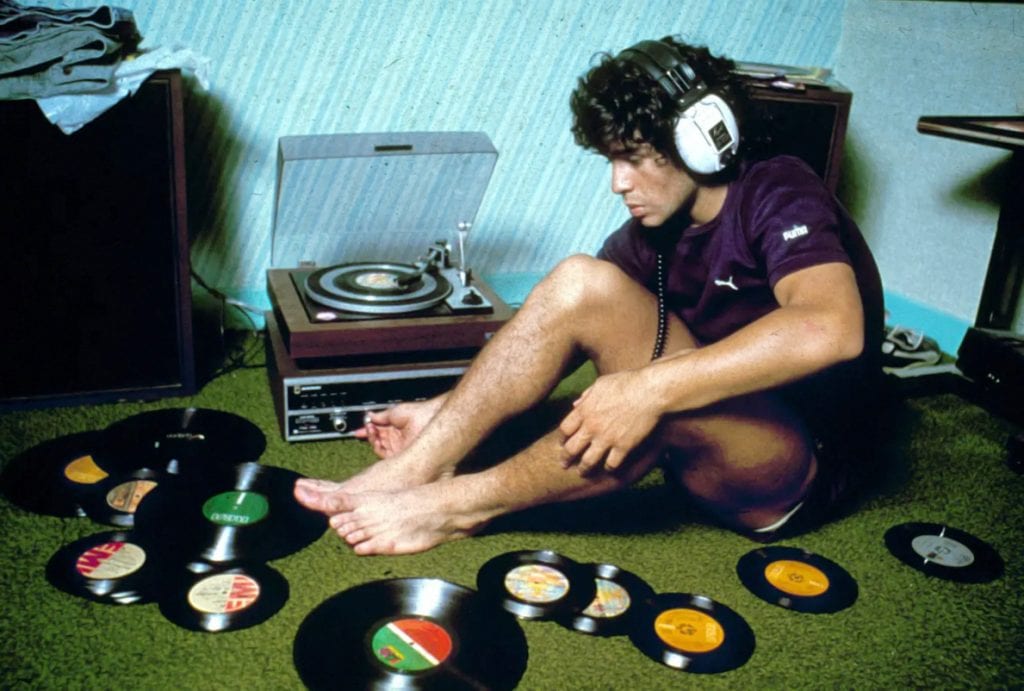
As you can probably tell, Maradona was on cloud nine after that iconic 1986 World Cup tournament. But was it possible that the soccer star was taking things too far in Italy? In Naples, Maradona's reputation was god-like. But his seven-year spell at Napoli was marked by many off-the-pitch controversies.
Allegedly tied with the Camorra, Naples' mafia-like secret criminal society, Maradona was also accused of having an illegitimate son. The Argentinian's well-known cocaine addiction also got him into a lot of trouble. His performances were hurt, he missed many games and training sessions, and he suffered from high stress levels.
One Could Only Go Down
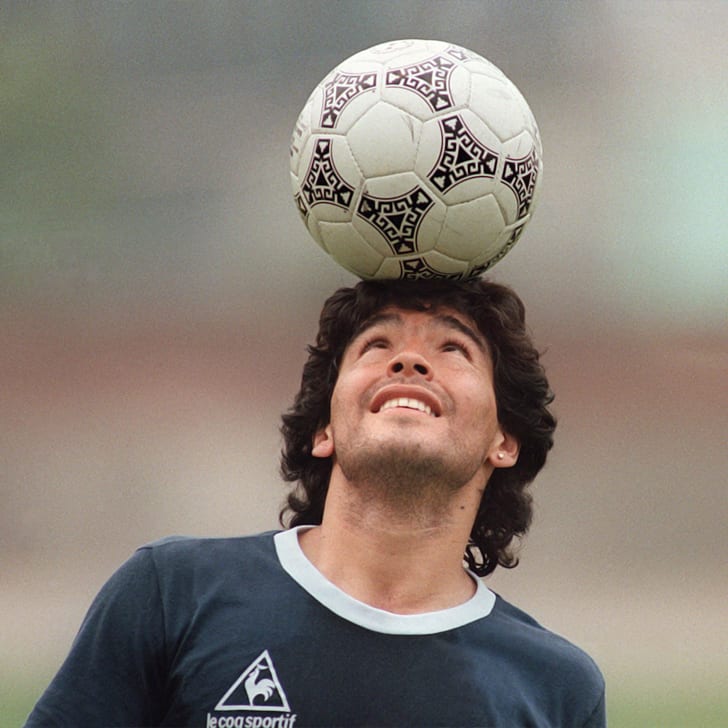
The bigger they are, the bigger they fall. And Maradona's late soccer career was not as praise-worthy as one would expect. His cocaine habit was in the origins of a 15-month ban from the game. And in 1991, Naples's god-like soccer superstar left the city, not in glory, but shame.
Unimpressive spells marked the final days of his athletic career at Spain's Sevilla, Argentina's Newell's Old Boys, and Boca Juniors, the team Maradona supported and for which he played his last soccer match. He played in the 1990 and 1994 World Cup editions before retiring, but his performances were seriously impacted by an ankle injury (in 1990) and a positive doping drug test (in 1994).
A Family Man
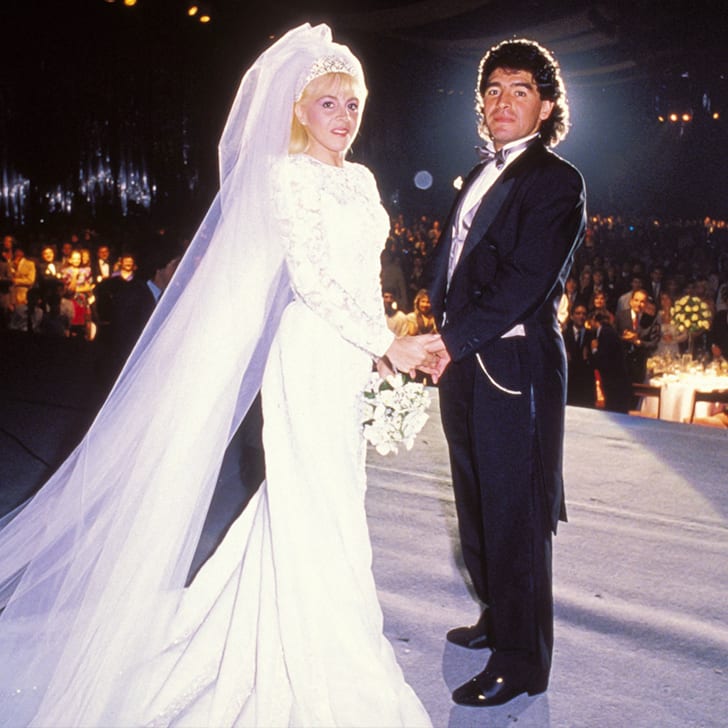
In 1989, Maradona married his long-time companion Claudia Villafañe in a Buenos Aires ceremony. Sharing two daughters, the couple would stay together for decades before divorcing in 2004. While living in Naples, Maradona was still pretty close to his family in Argentina.
In 1990, he was interviewed by Sports Illustrated and showed the reporters a $15K bill for long-distance calls; that was reportedly the minimum monthly amount he spent so that he could talk to his beloved parents and siblings. Meanwhile, Maradona was taken to court for refusing to admit he had an illegitimate son. In 1993, the courts established that he was indeed the father of a boy called Diego Sinagra, but he only agreed to meet him ten years later, in 2003.
Too Big For Jail?
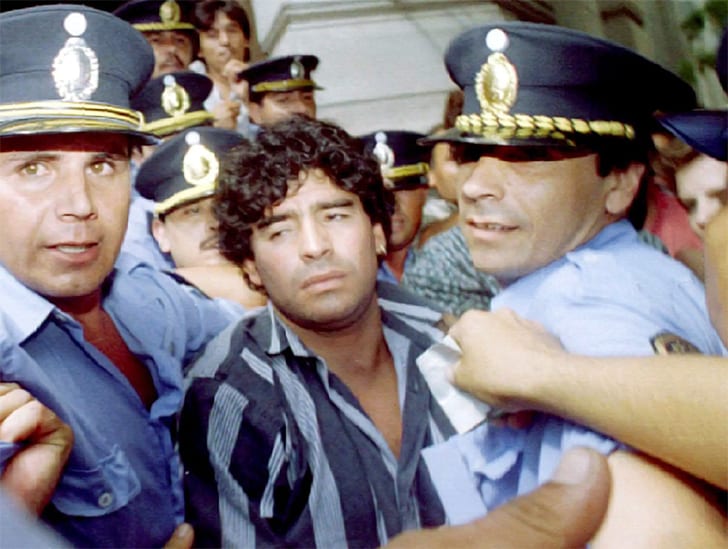
The '90s were a tough time for Maradona. Far from his best soccer days, he got involved in a major controversy in 1994, after shooting at journalists with an air rifle. The reporters were trying to peek into his Buenos Aires home, and the Argentinian didn't like it.
The shooting mishap resulted in at least six people's injuries, and Maradona was charged with a suspended prison sentence of two years and ten months. Even though his actions were illicit, it's fair to say the beloved soccer player was too big for jail. The general public eventually forgot the incident.
It's All About Soccer
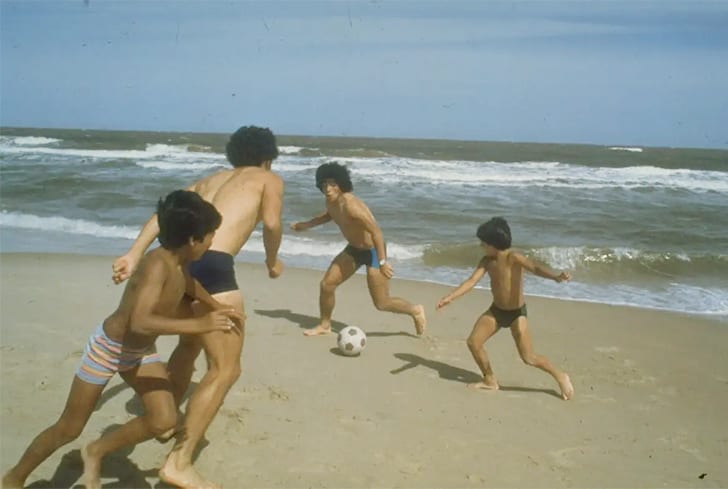
Ever since he was a young boy, Maradona was surrounded by other soccer fans and soccer players. His two younger brothers, Hugo and Raúl, both enjoyed semi-successful soccer careers, playing for sides like Argentinos Juniors, Boca Juniors, Austria's Rapid Vienna, and U.S.'s Fort Lauderdale Strikers.
Even Maradona's illegitimate son Diego Sinagra tried his luck at the soccer pitch, and he's still a professional footballer today, representing the humble Italian side of Villa Literno! Maradona's son-in-law is Sergio "Kun" Agüero, an Argentinian international currently representing the former English champions of Manchester City.
What Now?
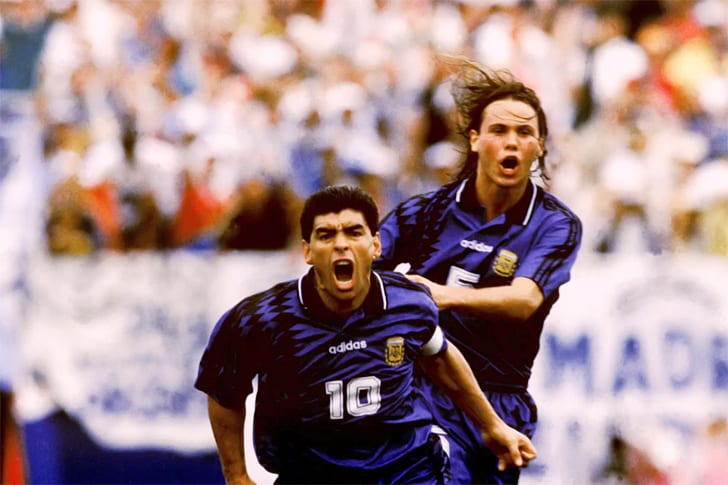
At the 1994 World Cup edition, a soon-to-be-banned Maradona scored his last-ever international goal in a game against Greece. His celebration became famous, mainly due to Maradona's bull-like facial expression and bulging eyes. That year, Argentina was disappointingly eliminated by Romania at the round of 16.
After retiring from soccer in 1998, Maradona went back to the pitch to play a few tribute games, including a 2001 match between Argentina's national team and a selection of fine soccer players from all around the world. But now that the Argentinian's playing days were over, what was left for Maradona to do?
A Living Legend
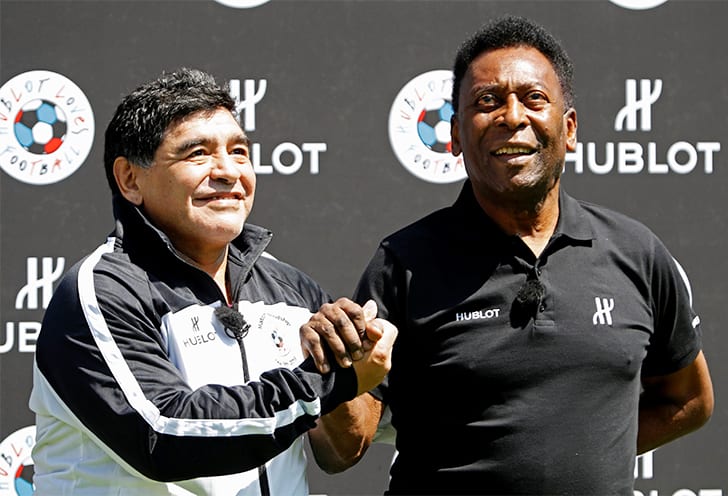
Following his retirement, Maradona dedicated his time mostly to enjoying life. In 2000, he was named FIFA Player of the Century, alongside the legendary Brazilian superstar Pelé. Trying to decide which one of these two is the best-ever is still one of soccer's most stimulating and controversial debates.
But only five years after receiving that special accolade, Maradona was back to the training ground. Not as a player, but as the vice-president of his beloved Boca Juniors club. Charged with managing the first team's squad, Maradona helped Boca win four competitions between 2005 and 2006, including the Argentinian Apertura and Clausura tournaments.
From VP to TV Star
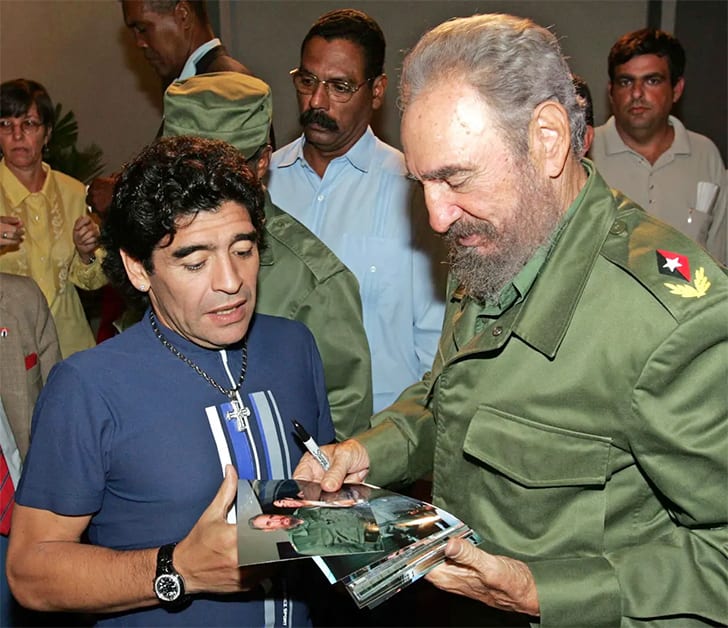
Accustomed to being in front of the cameras for the better and the worse, Maradona decided to get his own TV talk-show in 2005. It was called La Noche del 10 (The Night of the 10), and it ran for only one season. Still, it featured many notable guests, including the aforementioned Pelé (the show's very-first guest) and the likes of Zidane, Ronaldo, Mike Tyson, and even the Cuban leader Fidel Castro!
When Maradona was done with his odd talk-show, he joined the British program Soccer Aid and raised money for UNICEF. Around that time, in 2006, he left his VP position at Boca Juniors.
His Health Has Always Been a Cause for Concern
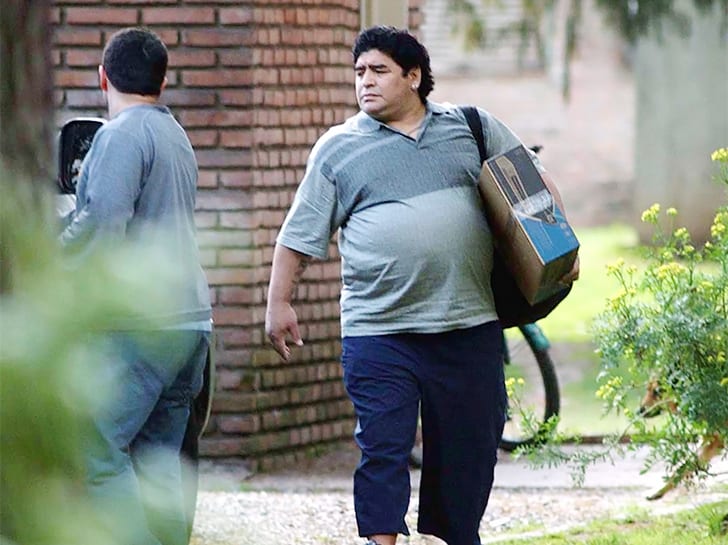
While we tend to believe most athletes are as healthy as possible, that was certainly not Maradona's case. Addicted to cocaine and the "finer" things in life, such as Cuban cigars, Maradona never allowed health concerns to get in the way of his unhinged love for having fun.
But it wasn't just the drugs and alcohol. Maradona also struggled with his weight, to the point of undergoing gastric bypass surgery in 2005. After reportedly weighing 280 pounds, the Argentinian slimmed down to star in his one-season Argentinian talk-show. Between 2005 and 2020, he was hospitalized multiple times for issues such as hepatitis and a hernia.
The Spotlight Is His
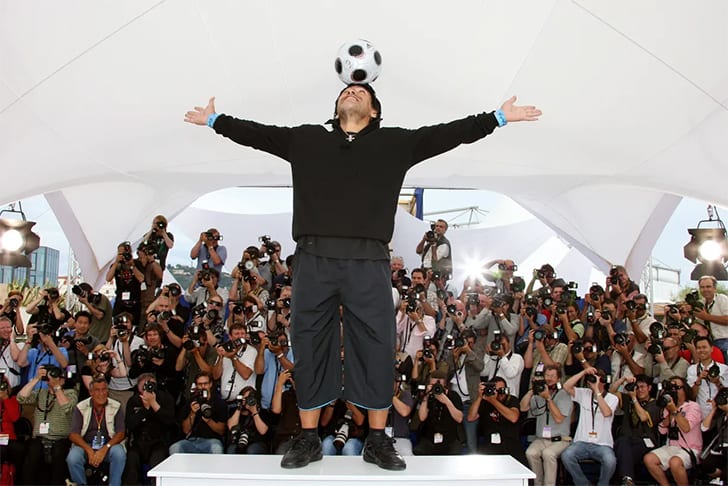
But if anything, Maradona's laid-back and often irresponsible attitude towards life only made him an even bigger legend to many fans. In 2008, the renowned Serbian filmmaker Emir Kusturica released a documentary film about Maradona showing a completely different side of the footballer.
A mix between a genius, a drug baron, and a living god, Kusturica's Maradona is a controversial but polarizing figure. While we all know moviemakers tend to exaggerate, the documentary Maradona By Kusturica is a fascinating fact-based depiction of the Argentinian soccer superstar that's definitely worth watching.
Court Cases & Financial Problems
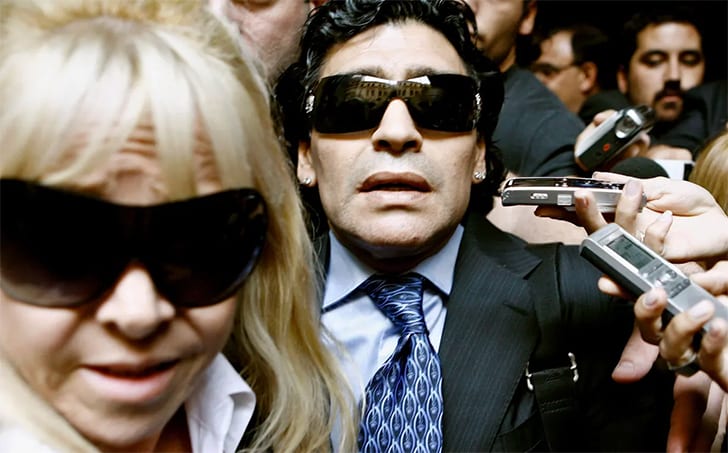
One of the most important people in Maradona's life was his long-time manager Guillermo Coppola. The two were friends and colleagues for decades, but their close relationship ended tumultuously with an emotional and dragging court case. The Argentinian star accused Coppola of stealing his money, and Maradona's ex-wife Claudia even showed up to show her support in one or two court sessions.
Meanwhile, Maradona was facing his own accusations of "stealing money." In 2009, the Italian state accused him of owing €37 million (roughly $44 million) in taxes. But as Maradona was accustomed, he got away with it without paying the full price! Reportedly, Maradona paid only €42K out of the €37 million owned, as well as two sets of earrings and two expensive watches.
Back to The Pitch... As a Manager
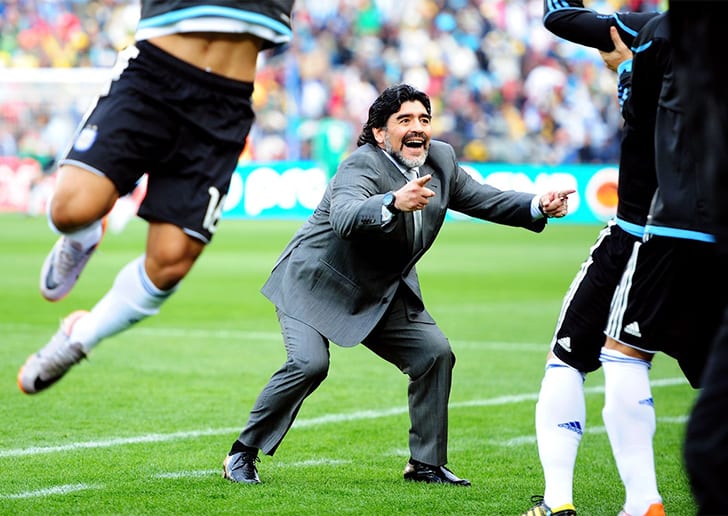
Following that iconic 1986 World Cup edition, the Argentinian national soccer team failed to prove itself on the international stage. In the wake of the 2010 World Cup, the Argentine Football Association (AFA) decided to enlist Maradona as the coach. Maradona had no previous managerial experience apart from two forgettable spells at the sides of Textil Mandiyú and Racing Club. But AFA believed his symbolic presence would be enough to inspire the talented players in their squad.
Leading a team that counted with superstars like Lionel Messi, Javier Mascherano, and Carlos Tevez, Maradona failed to take Argentina past the quarter-finals after losing shockingly against Germany with 4-0. But Maradona's sheer presence on the bench turned out to be one of the 2010 World Cup highlights.
The Soul of Argentinian Soccer
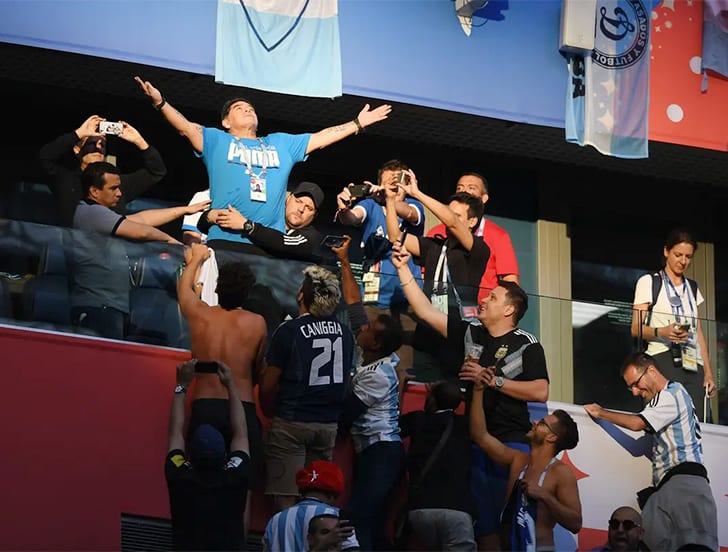
In the 2010 World Cup, a victory for Argentina would have made for a sensational milestone in Maradona's ever-successful career. But even though such didn't happen and Maradona left his coaching position at Argentina that same year, he never stopped being there for his country.
In 2018, he took some time off from his managerial position at United Arab Emirates' Al-Fujairah to support his country from the sidelines. As always, he stayed at the center of attention, even though he was just technically another fan amidst the crowd. Sadly, it was Maradona's last-ever World Cup, and Argentina was unable to make it past the round of 16, losing against the to-be champions of France.
Always a Worldwide Phenomenon
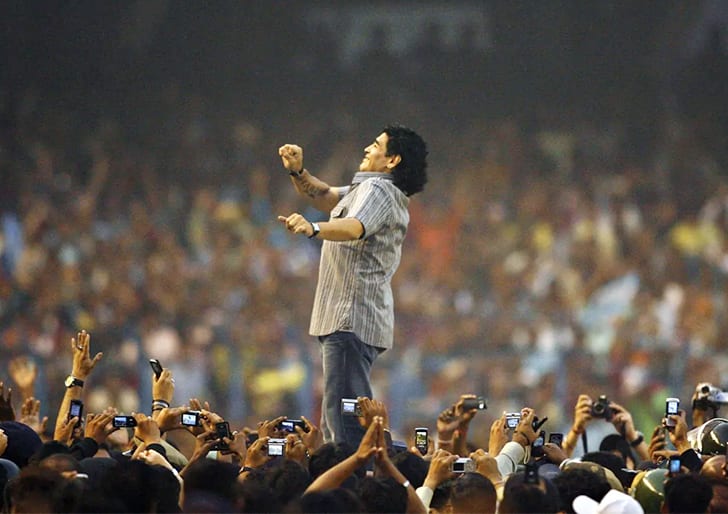
Iconic athletes never really leave the fans' memory, but it's fair to say Maradona was on a whole other level. His name and reputation were known worldwide, including in India, where cricket is king and soccer is only a relatively popular sport.
He visited India on more than one occasion, helping to promote soccer in the country and engaging with many die-hard fans. He was present at the inauguration of the Indian Football School in 2006, where he received a gift from a young fan: a drawing of revolutionary hero Che Guevara, one of Maradona's idols. In 2008, he went back to the Indian city of Kolkata and was greeted like a god.
Late Odd Efforts
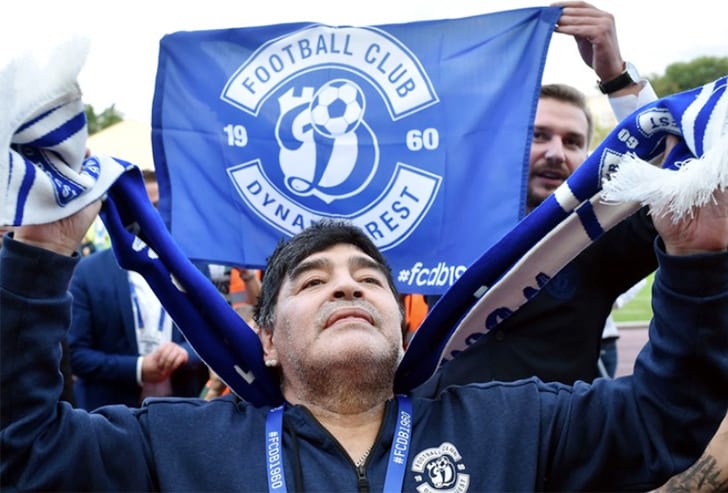
Maradona's later soccer efforts in life were kind of odd, but successful still. In 2018, he was surprisingly announced as the new president of Dinamo Brest, a club playing in the peripherical league of Belarus. He stayed for less than one year, but his influence was vital: in 2019, Dinamo Brest won the Belarussian title for the first time, ending a successful 13-title run of rivals BATE Borisov.
That same year, the Argentinian was announced as the new head coach of the Mexican side Dorados, landing 18 victories in 39 games. His final job in the game, though, was back in Argentina. He coached the Gimnasia side briefly, between 2019 and 2020.
Death Is Not The End
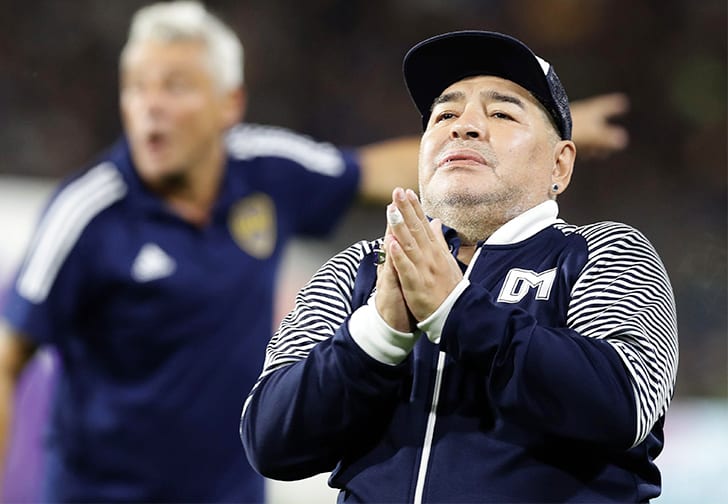
On 25 November 2020, the world mourned the sudden passing of Maradona, aged 60. Less than a month after undergoing emergency brain surgery, the Argentinian suffered a fatal heart attack at his home in Tigre, Buenos Aires.
His death was in the origin of a series of tributes that went way beyond the world of soccer. In his home country of Argentina, Maradona's passing became a national event, with tens of thousands of people attending his 26 November wake. One day later, Maradona was buried next to his parents at the Jardín de Bella Vista cemetery.
Celebrating One of Soccer's Best

The reactions to Maradona's passing were widespread and almost immediate. The Indian Aditya School of Sports named their stadium after Maradona; the AFA announced that a new Argentinian soccer competition would be named Copa Diego Armando Maradona (Diego Armando Maradona Cup); in Napoli, thousands of fans gathered outside the San Paolo Stadium to honor their idol.
Maradona's death was paid tribute to in rugby games, in Pakistan, and everywhere in the world of soccer. Saddened by his sudden passing, his close friend and greatest rival Pelé said, "I hope we can play football together in heaven."
Legends Live Forever
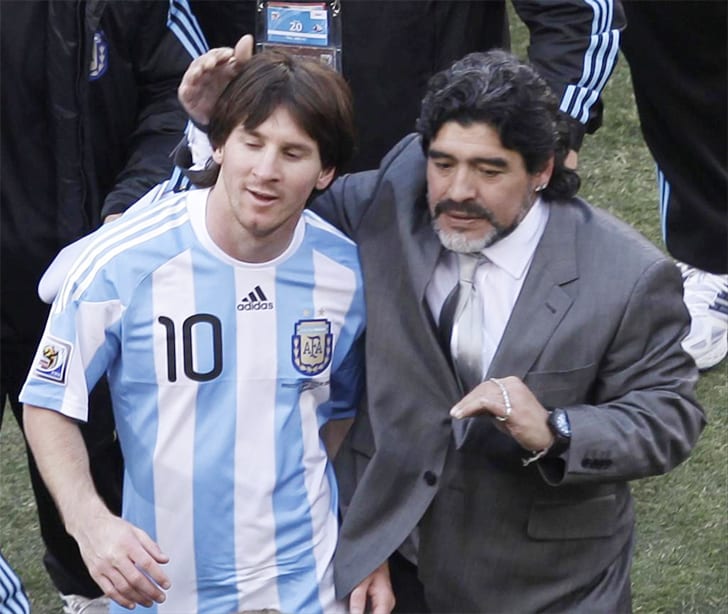
Can a man as iconic as Maradona truly die? Even though he's no longer with us, the Argentinian genius will remain one of soccer's greatest. His unbelievable talent, one-of-a-kind personality, and ever-present spirit will stay with us forever.
On 29 November, Argentina's present-day soccer genius Lionel Messi paid tribute to Maradona with a goal in the 4-0 victory of F.C. Barcelona over Osasuna. And who knows? Maybe Argentina's new number 10 can feel the touch of the genius of the late Maradona and lead Argentina to a new World Cup victory in the 2022 FIFA World Cup.
